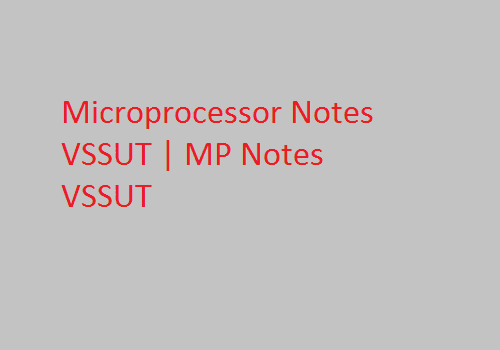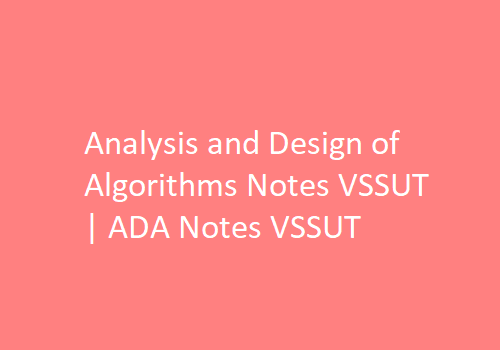Here you can download the free Database Management System Pdf Notes – DBMS Notes Pdf latest and Old materials with multiple file links. Database Management System Notes Pdf – DBMS Pdf Notes starts with the topics covering Data base System Applications, data base System VS file System, View of Data, Data Abstraction, Instances and Schemas, data Models, the ER Model, Relational Model, Other Models etc
Database Management System Notes pdf – DBMS notes pdf Free Download
Latest Material Links
Complete Notes
Link – Complete Notes
Unit 1
Link – Unit 1 Notes
Unit 2
Link – Unit 2 Notes
Unit 3
Link – Unit 3 Notes
Unit 4
Link – Unit 4 Notes
Unit 5
Link – Unit 5 Notes
Old Material Links
Link:Complete Notes
Note :- These notes are according to the r09 Syllabus book of JNTUH. In R13 & R15,8-units of R09 syllabus are combined into 5-units in r13 syllabus.Click here to check all the JNTU Syllabus books
Database Management System Pdf Notes – DBMS Pdf Notes
UNIT I
Data base System Applications, data base System VS file System – View of Data – Data Abstraction –Instances and Schemas – data Models – the ER Model – Relational Model – Other Models – Database Languages – DDL – DML – database Access for applications Programs – data base Users and Administrator – Transaction Management – data base System Structure – Storage Manager – the Query Processor
UNIT II
History of Data base Systems. Data base design and ER diagrams – Beyond ER Design Entities, Attributes and Entity sets – Relationships and Relationship sets – Additional features of ER Model – Concept Design with the ER Model – Conceptual Design for Large enterprises.
UNIT III
Introduction to the Relational Model – Integrity Constraint Over relations – Enforcing Integrity constraints – Querying relational data – Logical data base Design – Introduction to Views – Destroying /altering Tables and Views. Relational Algebra – Selection and projection set operations – renaming – Joins – Division – Examples of Algebra overviews – Relational calculus – Tuple relational Calculus – Domain relational calculus – Expressive Power of Algebra and calculus.
UNIT IV
Form of Basic SQL Query – Examples of Basic SQL Queries – Introduction to Nested Queries – Correlated Nested Queries Set – Comparison Operators – Aggregative Operators – NULL values – Comparison using Null values – Logical connectivity’s – AND, OR and NOT – Impact on SQL Constructs – Outer Joins – Disallowing NULL values – Complex Integrity Constraints in SQL Triggers and Active Data bases.
Database Management System Notes pdf – DBMS Notes Pdf
UNIT V
Schema refinement – Problems Caused by redundancy – Decompositions – Problem related to decomposition – reasoning about FDS – FIRST, SECOND, THIRD Normal forms – BCNF – Lossless join Decomposition – Dependency preserving Decomposition – Schema refinement in Data base Design – Multi valued Dependencies – FORTH Normal Form.
UNIT VI
Transaction Concept- Transaction State- Implementation of Atomicity and Durability – Concurrent – Executions – Serializability- Recoverability – Implementation of Isolation – Testing for serializability- Lock –Based Protocols – Timestamp Based Protocols- Validation- Based Protocols – Multiple Granularity.
UNIT VII
Recovery and Atomicity – Log – Based Recovery – Recovery with Concurrent Transactions – Buffer Management – Failure with loss of nonvolatile storage-Advance Recovery systems- Remote Backup systems.
UNIT VIII
Data on External Storage – File Organization and Indexing – Cluster Indexes, Primary and Secondary Indexes – Index data Structures – Hash Based Indexing – Tree base Indexing – Comparison of File Organizations – Indexes and Performance Tuning- Intuitions for tree Indexes – Indexed Sequential Access Methods (ISAM) – B+ Trees: A Dynamic Index Structure.
Reference:
1. Data base Systems design, Implementation, and Management, Peter Rob & Carlos Coronel 7th Edition.
2. Fundamentals of Database Systems, Elmasri Navrate Pearson Education
3. Introduction to Database Systems, C.J.Date Pearson Education
Text books:
1. Data base Management Systems, Raghurama Krishnan, Johannes Gehrke, TATA McGrawHill 3rd Edition
2. Data base System Concepts, Silberschatz, Korth, McGraw hill, V edition.
Frequently Asked Questions
Q1: What is a database management system?
A1: An inter related data collection that helps in successful retrieval, insertion and deletion of data from database and organizes the complete data into tables, views, reports etc is known as database. A software that is used to manage all these data in database is known as Database management system. Data definition, data updation, data retrieval, user administration allows users to manage the database system.
Q2: What was the necessity to shift from File system to Database management system?
A2: Files in Hard disk is used to manage the data in File system. The one who uses file system is allowed to create, modify, edit, delete and update the files according to the requirement. Issues with this particular system are,
- Inconsistency of data
- Difficulty in accessing the data
- Redundancy in data
- Unauthorized access
- No backup or recovery of the data
- No concurrent access
Because of these reasons Database management system is required and hence the shift.
Q3: What is DDL and DML?
A3: Data Definition Language (DDL) is a database schemas and description about how data should be stored
Data Manipulation Language (DML) focuses on data manipulation.


